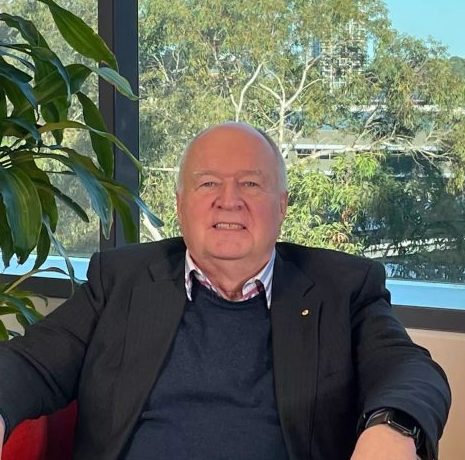What is the current state of heart failure management in Thailand? And what in your opinion are some of the biggest unmet needs in this field?
The prevalence of heart failure has been increasing in many countries worldwide, include Thailand.
This is due to aging populations and improvement in cardiovascular care. Currently, heart failure is one of the most common admission diagnosis in patients. In terms of unmet need, two things come to mind. One is the education or the awareness about the symptoms of heart failure on both the general public and the healthcare provider. The second unmet need would be the technology for the treatment of the heart failure.
How is the HF clinic at Chulalongkorn hospital reducing rehospitalization of HF patients by up to 70-80%? What does the HF patient journey look like?
The heart failure clinic functions as a gateway for the patients to transition from inpatient to outpatient. The heart failure clinic helps educating the patients, how to take care of themselves and at the same time, empowers the physicians to make the best management for each individual patient. And by having this access to the clinic, the percent of the patients who have readmission has been decreased.
Typically, heart failure patients can present in two way. One, they are at risk to develop heart failure and having typical symptoms of difficulty breathing or other cardiac symptoms and go through outpatients investigation for heart failure diagnosis. Or they can develop sudden onset dyspnea and present to the emergency room and be admitted for acute heart failure. And once they are in the hospital, the heart failure team would help taking care of the patients and also follow up afterward.
What we are doing really well is how we utilize the multidisciplinary team, include the heart failure nurse, the heart failure pharmacist, and the most important person would be the patients and the caregiver. Those two helping us taking care of them. At the same time, our heart failure program have all the treatments that are recommended in the guideline from stage A to B, to the medications in the stage C, and also heart transplant and LVAD in stage D. Having all these thorough comprehensive options of treatment, we can take care of the patient from at risk to advanced heart failure.
What is the role and medical value of NT-proBNP in heart failure patient journey from a cardiologist perspective in Thailand? How do you interpret NT-proBNP in your daily practice?
In the past, if we suspected that the patient may have heart failure, we may have to send the patient for the echocardiogram, which in Thailand is performed by a cardiologist. So you can imagine the waiting time is quite long. The blood test like NT-proBNP can help us screening, diagnosis, and follow the patient with heart failure. Once a diagnosis is made, we can make a timely management for those patients.
The NT-proBNP test is a unique blood test because even though this is a new technology, it may benefit more to the primary care or non cardiologist. Because of the test can accurately exclude the patients that we suspect having heart failure or make the likelihood higher if they test positive and it can become a gatekeeper to help sending the patients to see the cardiologist.
At the same times, most of the randomized controlled trial that show benefit of the treatment of heart failure have the NT-proBNP level cut-off to help us select the appropriate patient for the appropriate treatment. So this simple blood test that can be done anywhere, doesn’t need a cardiologist, can help managing the patient.
Different settings have a different cutoff. I encourage all the audience to look at the guideline. In outpatient setting, the NT-proBNP level above 125pg/mL make the heart failure more likely. And for the acute settings, such as in the emergency room, the level below 300pg/mL, we can safely rule out heart failure. But if the value become above 450pg/mL, that make heart failure more likely. The cutoff can vary with the patient age, body habitus, and the chronic kidney function.
Sacubitril-valsartan is the new medications in the class called ARNI. The “N” and “I” in ARNI is neprilysin inhibitor. The neprilysin directly affect the BNP level, but not the NT-proBNP level. So if the patient is on this class of medications, the guidelines recommend using NT-proBNP rather than the BNP level.
What inspires you to continuously improve the HF management in your practice?
Compared with other fields in cardiology, heart failure is still relatively new, if you think about how long we have been doing stenting or the pacemaker. There are many more things that we can do for the patient in this field. Over the last 20-30 years, there are new medications, new treatment strategy, and new technology. Even though with all of this, the incidentce of heart failure hospitalizations, the mortality rate is still high. So because of those outcomes that that drive me to improve the care of our patients.
At the same time, this is one of the conditions that affect patient and patient family a lot. They are not able to participate in many activities due to the symptoms. So improving their quality of life and seeing them able to do more that drive us to help them.
Are you currently exploring other initiatives to enhance the management of HF, and what steps are you taking to refine these initiatives?
The focus has shift to what we can do when the patient discharged from the hospital to decrease the hospitalizations. Our hospital participate in the quality improvement project of the
American Heart Association called Get With The Guideline. This help us checking ourselves that we have done a good job before sending the patient home. And recently there has been a new strategy, how to follow up the patients after the discharge. If we see the patient more frequent, if we carefully monitor the patient and adjust the medication, this can reduce the heart failure hospitalization. So I encourage the audience to look at the STRONG-HF trial. It is a new way that we can help the patients.
How would you advise your peers on improving HF management in Asia Pacific?
With the care that we give to the patients, teach them how to take care of themselves. With simple blood tests and medications, this can change the outcome of the patient a lot. So this is the message that I would like to send to our peer. In Southeast Asia, we are limited in terms of the costs of care, the technology, but heart failure is one of those syndromes that the simple thing can change the result of the patients.


















